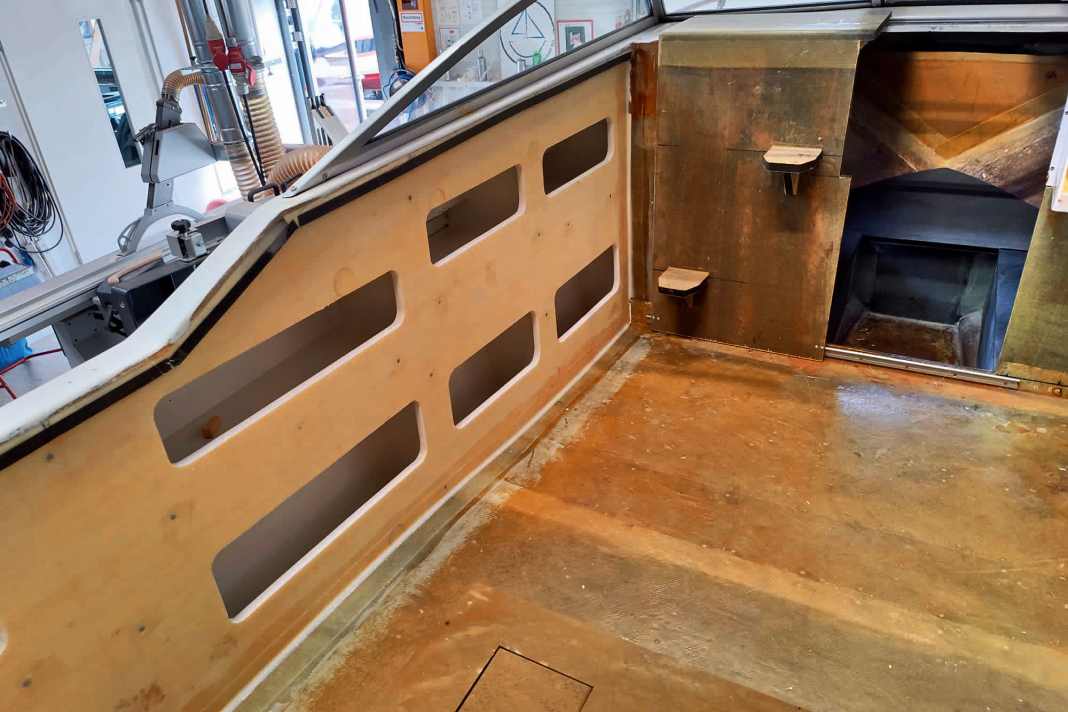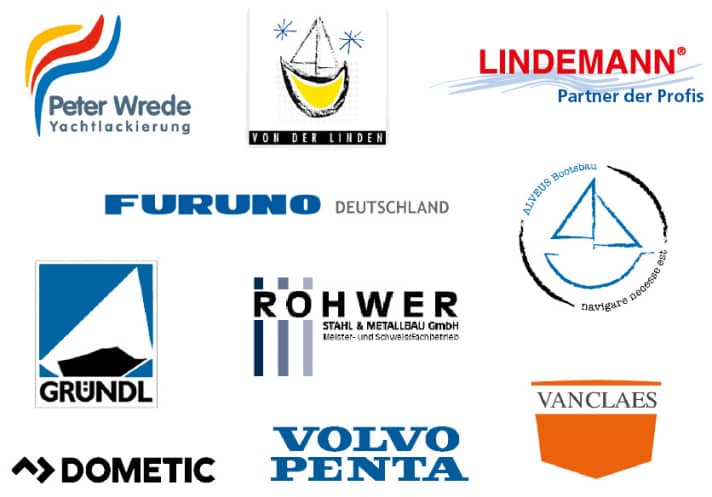





All episodes of the refit project:
- Part 1: Stocktaking
- Part 2: Replacing the rear view mirror
- Part 3: The underwater hull
- Part 4: GRP repairs
- Part 5: Antifouling coating
- Part 6: The motor foundation
- Part 7: The stringer system
- Part 8: The new engine
- Part 9: The new tank
- Part 10: The interior fittings
- Part 11: The interior work continues
- Part 12: The side panelling
- Part 13: Surface treatment and colour
The BOOTE-Refit project was quiet for a long time. The coronavirus pandemic had caused it to come to a standstill, but now things are moving forward. Thanks to our partners von der Linden and Alveus Bootsbau, a lot has happened: The 30-year-old Conquest 1950 CC is starting to look like a real boat again.
In the previous part of our series, we already started on the interior of the cockpit. The refrigerator is in place, as is the new double bench seat made from Coosa composite panels. This is a 40% lighter material than plywood. They are made of polyurethane foam reinforced with glass roving fabric. Coosa does not absorb moisture and therefore cannot rot. Now we continued with the cockpit.
Precisely fitting templates for side panelling
Hilmar Dembler-Malik and Fritz Müller from Alveus Bootsbau in Potsdam took care of the side panelling. This involved making templates from cardboard, which had to be adapted to the existing contours of the deck with millimetre precision. As our boat does not have a fixed bimini top that can be used to attach lighting, it had to be integrated into the side panelling. The idea for indirect lighting was quickly born. So we simply moved the side panels by 30 mm. Coosa strips were then glued into this area, which have a 15 mm wide and 10 mm deep groove to accommodate an LED strip.
The fact that the two boat builders are professionals was also evident in the panelling on the inside of the hull. An empty conduit for laying the cables and a sufficient number of pilot lines was also included. In order to utilise the space between the side panelling and the side wall, we planned swallows' nests as additional storage space. The driver and passenger seats had to be roughly positioned for this. Only now could these storage compartments be marked out.
Refit continues in the slip cabin
But work also continued in the slip cabin. Alveus has added longitudinal stringers and a new floorboard to the bow area of the Conquest. The stringers are reinforcements parallel to the keel that increase the rigidity of the hull. Together with the frames, they form the load-bearing framework of the construction. The support surfaces for the bunks are later mounted on these longitudinal stringers made of Coosamaterial. Glued and laminated over, this makes a good impression. The shipyard painted the resulting storage spaces white with epoxy primer. They offer enough space for clothing and provisions. The mattress supports (also made of Coosa), which were adapted to the shape of the hull, were also built in this step. In order to be able to use the entire front area as a continuous lying surface later on, an additional centre piece was made for the gap between the supports on both sides. This creates a comfortable V-berth for two people.
In the next part, we will be focussing on paint and finishes. Our refit boat will be sent to the Peter Wrede company in Kappeln on the Schlei.
Video of the refit project
The BOOTE Refit project is supported by

